With the world’s most recognizable ‘cushion’ case silhouette and intriguing century-long military heritage, Panerai is a watchmaker unlike any other. Materializing the intersection between technical innovation and toughness, Panerai doesn’t make James Bond watches – instead, brawnier, beefier watches better fitting for Rambo, Indiana Jones or Arnold Schwarzenegger. This legacy of Italian craftsmanship began around the mid-19th century when Giovanni Panerai opened a watch and clock workshop in the heart of Florence, Italy, but it was the 1935 Radiomir prototype whose ‘lume’ led a new path for the maison.
Celebrating the Panerai Radiomir parent’s 90th anniversary this year, we’re looking back at the icon’s history of highly legible, sandwich-style dials and how they ‘lumed’ through history.
First Signs of ‘Lume’ – Origin of lume in the world
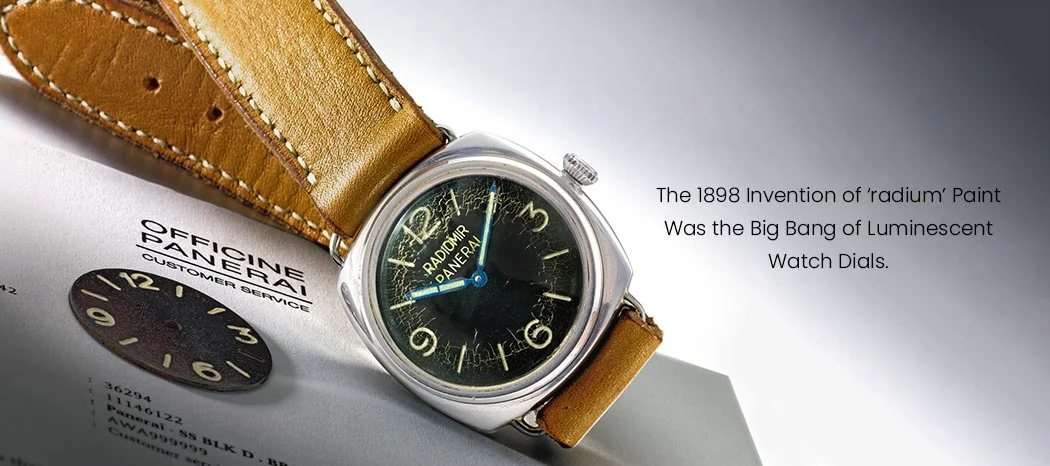
The 1898 invention of ‘Radium’ paint was the Big Bang of luminescent watch dials. Discovered by Polish French Chemists Maria Sklodowska and Pierre Curie, this radium and zinc sulfide mixture quickly became a staple ingredient in cosmetics, ammunition, and quack medical treatments. At this time, radium’s deadly properties weren’t even known, let alone understood. As WW1 loomed in, this pioneering magic substance found military use, especially after scientists discovered that electrolysis could rapidly amplify the luminosity of Radium. This essential trait provided legibility for soldiers observing pocket watches in dark battlefield trenches and covert night-time dives.
Panerai’s Heritage of Crafting Professional Divers’ Watches
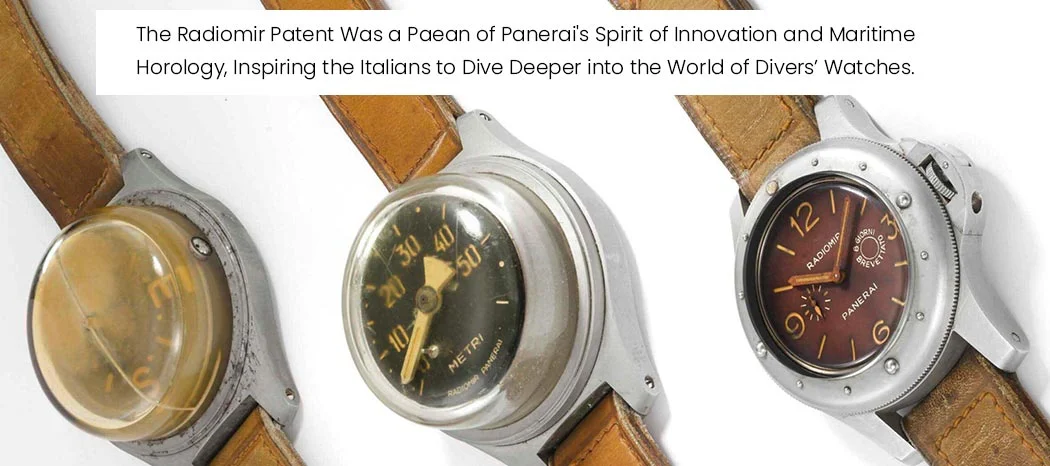
Dialling back our clocks to 1916, the Panerai family, in collaboration with Lieutenant Commander Carlo Ronconi, had supplied the Italian Royal Navy with combat sights and precision instruments for their military operations. As the tide of war changed, so did its military needs and special radium-powdered dials were developed, which significantly enhanced the liability of their instruments. Panerai’s expertise in crafting pressure-resistant gauges and compasses was elevated by applying Radium to watch dials, enabling readability even in murky waters. On March 23, 1916, in France, Panerai filed a patent for a proprietary self-luminescent paste titled ‘Radiomir’. The Radiomir patent was a paean of Panerai’s spirit of innovation and maritime horology, inspiring the Italians to dive deeper into the world of divers’ watches.
The First Radiomir Prototype
Two decades later, Guido Panerai began a major collaboration with the Royal Italian Navy to create military-grade precision instruments for elite undersea commandos. During this time, the Italian Royal Navy also set up a secret military program of new underwater assault vehicles and operators – for which the already-reputed dive gauge manufacturer Officine Panerai partnered with Swiss watchmakers to create luminescent technical tools, including a wristwatch. After testing several high-strength diving timepieces, the 1935 Giuseppe Panerai commissioned Ref 2533 proved to survive all technical tests. This was based on a Geneva-based model modified by Panerai.
The Mission Continues
During World War II, Panerai consistently refined the Radiomir to meet evolving military needs, focusing mostly on performance, robustness, and legibility. This led to the creation of the Ref 3646 – the model revered as the first ‘Radiomir’ watch. It was largely produced through the 40s in various iterations and combinations of features. Featuring a large 47-millimetre cushion-shaped stainless-steel case with wire welded lugs, it was strapped on with heavy-duty water-resistant leather (long enough to be worn over dive gear) and, of course, luminous hands and indexes on the dial, promising legibility underwater.
Giuseppe Panerai further refined the dial’s technical brilliance using overlapping disks, known as ‘sandwich dials’. This employed an upper anodised aluminium dial with perforated indexes, which allowed the radium paste on the lower disk to vibrantly contrast and offer better luminescence. To improve the dial’s legibility, its layout was redesigned with just four large Arabic numerals in the cardinal points and 8 indexes at the hour markers.
War Ends, Legacies Don’t
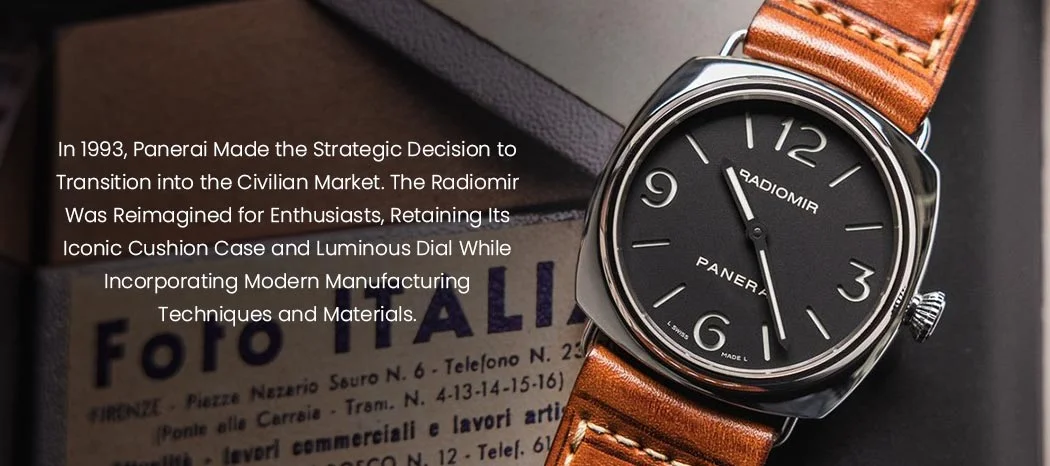
Armed with Swiss-grade mechanical functionality, robust Italian craftsmanship, and avant-garde luminous dial legibility, the Panerai watch was unstoppable. However, it had one issue – the phosphorescent Radiomir dial was notoriously radioactive and deadly toxic. Panerai’s magic ingredient emitted ionized ‘gamma rays’ that strip electrons from atoms. Giuseppe Panerai recognized this fatal feat and cautiously handled it, heading into R&D. After numerous studies, experiments, and trials, Panerai’s patent for Luminor was approved in 1949. Luminor was recognised as a new luminescent tritium-based substance (a hydrogen isotope) with very low and harmless emissions. The Luminor gradually became the Panerai diving watch. The prowess of the Radiomir silhouette didn’t come to a halt, continuing to serve military needs beyond the dark veil of war. In 1956, the Ref. GPF-2/56 were supplied to the Egyptian Navy with a key characteristic of its massive 60-millimetre case: a crown-protecting device. In 1993, Panerai made the strategic decision to transition into the civilian market. The Radiomir was reimagined for enthusiasts, retaining its iconic cushion case and luminous dial while incorporating modern manufacturing techniques and materials.
Current Configurations at Kapoor Watch Company
Today, the Radiomir continues to evolve yet stays true to its original ‘lume’ and Italian military roots from nearly a century ago. At Kapoor Watch Company, the Panerai Radiomir is available in case options of Stainless Steel, Patina Steel, and Pink Gold, in sizes of 40 millimetres and 45 millimetres. The Radiomir Quaranta (Ref. PAM01293) embraces Panerai’s naval heritage with an abyss-blue-toned dial adorned by a date window at three o’clock and a small seconds at nine, running automatic and strapped in blue leather. One model that will surely capture your attention is the Radiomir Tre Giorni (Ref. PAM01350) draped in a stunning beige dial and matching brown leather strap. Inside, it runs manually with a three-day power reserve.

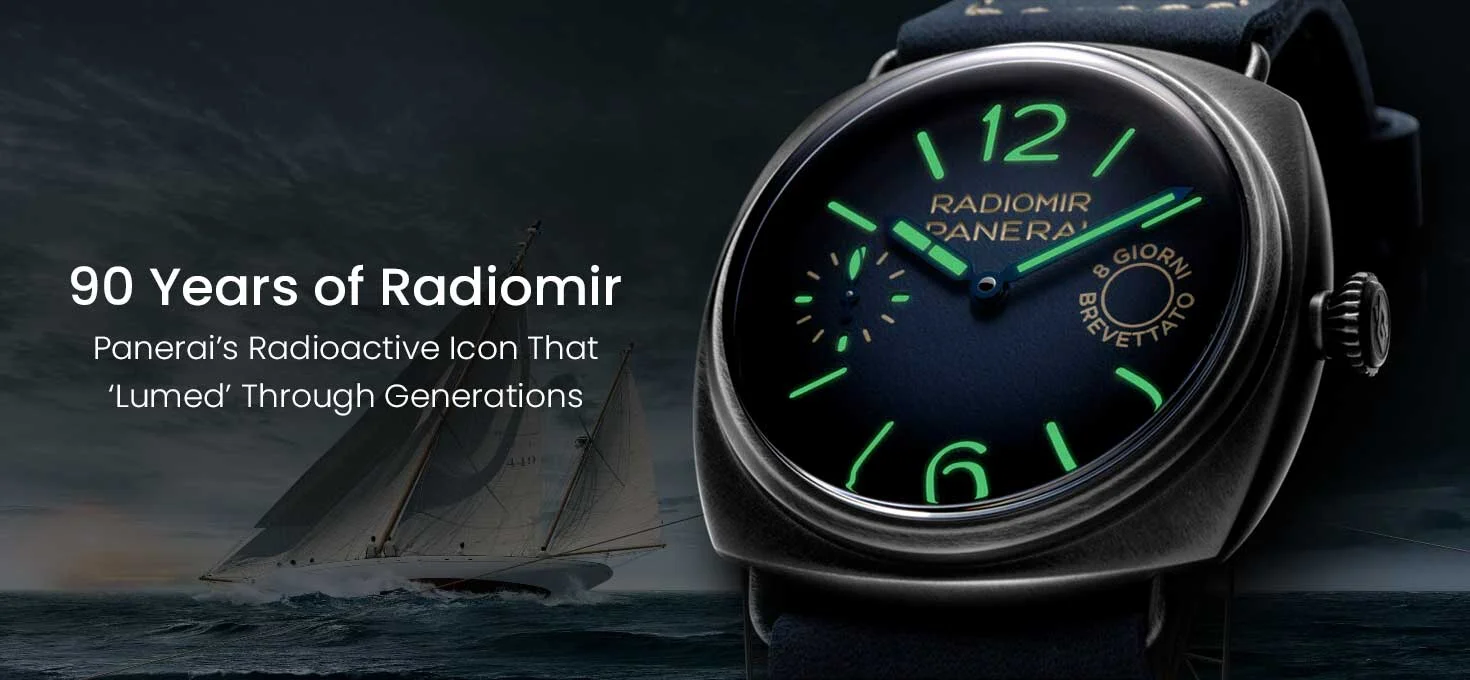
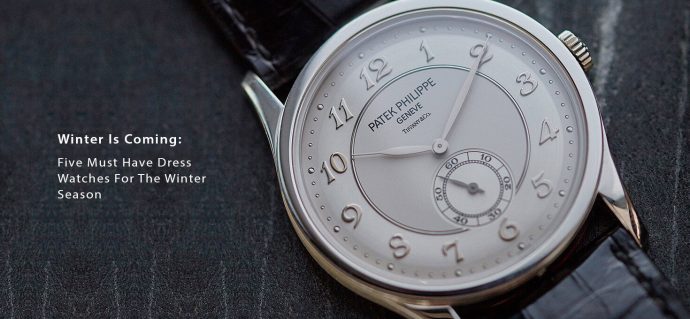


Recent Posts
Recent Comments
Archives